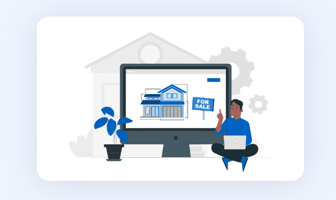Introduction In today's fast-paced digital world, the real estate industry has embraced technology...
Unveiling the World of HL7 Development
If you're venturing into the world of healthcare informatics, you've likely encountered the term "HL7 development." But what exactly does it entail, and why is it so crucial in the healthcare industry? In this article, we will explore the nuances of HL7 development, providing insights, explanations, and answers to frequently asked questions to help you understand this fascinating subject.
HL7 Development: The Foundation
HL7 Development, or Health Level 7 development, is the process of creating and implementing standards for the exchange, integration, sharing, and retrieval of electronic health information. These standards are fundamental to ensure that healthcare systems can communicate effectively and seamlessly.
Understanding HL7 Standards
At the core of HL7 development are the HL7 standards. These standards serve as a universal language for the healthcare sector, facilitating the exchange of data between various systems. The HL7 standards are developed and maintained by the HL7 International organization, a leading authority in healthcare data exchange. They cover aspects like patient demographics, laboratory results, clinical documents, and more, enabling healthcare providers to share information securely and efficiently.
The Role of HL7 in Healthcare
HL7 standards are the backbone of electronic health records (EHR) systems, making it possible for healthcare providers to access and share vital patient information promptly. This not only enhances patient care but also reduces errors and improves overall healthcare system efficiency.
HL7 Development in Action
In the world of healthcare, the practical application of HL7 development is wide-ranging and multifaceted. Here are some key areas where HL7 development plays a pivotal role:
1. Data Exchange Between Healthcare Systems
HL7 standards enable different healthcare systems, such as EHR and laboratory information systems, to share data seamlessly. This data exchange ensures that healthcare professionals have access to comprehensive patient information when making critical decisions.
2. Interoperability
Interoperability is a buzzword in healthcare, and HL7 development is at its core. Through these standards, various healthcare IT systems can work together, ensuring that data flows effortlessly between them. This interoperability leads to more efficient healthcare delivery.
3. Telemedicine
With the rise of telemedicine, HL7 development is becoming increasingly important. It allows for the integration of telemedicine platforms with EHR systems, ensuring that remote consultations and data sharing are secure and efficient.
4. Medical Device Integration
HL7 standards are also vital in integrating data from medical devices like heart monitors and infusion pumps into EHR systems. This integration ensures that real-time data is available to healthcare providers for timely interventions.
5. Quality Reporting
Healthcare organizations are often required to report data to regulatory bodies and insurance providers. HL7 standards make this reporting process efficient, reducing administrative burdens.
FAQs About HL7 Development
What is the significance of HL7 development in healthcare? HL7 development is significant in healthcare because it enables the standardized exchange of electronic health information, ensuring that healthcare systems can communicate seamlessly, which ultimately leads to improved patient care.
How do HL7 standards affect interoperability in healthcare? HL7 standards promote interoperability by providing a common language for different healthcare systems. This ensures that data can be exchanged without barriers, improving overall healthcare delivery.
What are the key areas where HL7 development is applied? HL7 development is applied in data exchange between healthcare systems, interoperability, telemedicine, medical device integration, and quality reporting, among others.
Can HL7 standards integrate data from medical devices into EHR systems? Yes, HL7 standards facilitate the integration of data from medical devices into EHR systems, ensuring real-time data availability to healthcare providers.
How does HL7 development reduce administrative burdens in healthcare organizations? HL7 development streamlines data reporting, reducing administrative burdens for healthcare organizations by ensuring that data can be shared efficiently with regulatory bodies and insurance providers.
What is HL7 International's role in HL7 development? HL7 International is a leading authority in healthcare data exchange and plays a vital role in developing and maintaining HL7 standards.
Conclusion
HL7 development is the unsung hero of healthcare informatics, silently powering the seamless exchange of vital patient data. As we navigate the ever-evolving landscape of healthcare, HL7 development will continue to play a crucial role in shaping the future of healthcare informatics. Understanding its significance is essential for anyone involved in healthcare technology and patient care.
Now that you have a deeper insight into HL7 development, you're better equipped to appreciate its role in the healthcare ecosystem. As the healthcare industry evolves, HL7 development will remain at its forefront, ensuring the efficient flow of information and ultimately improving patient outcomes.


